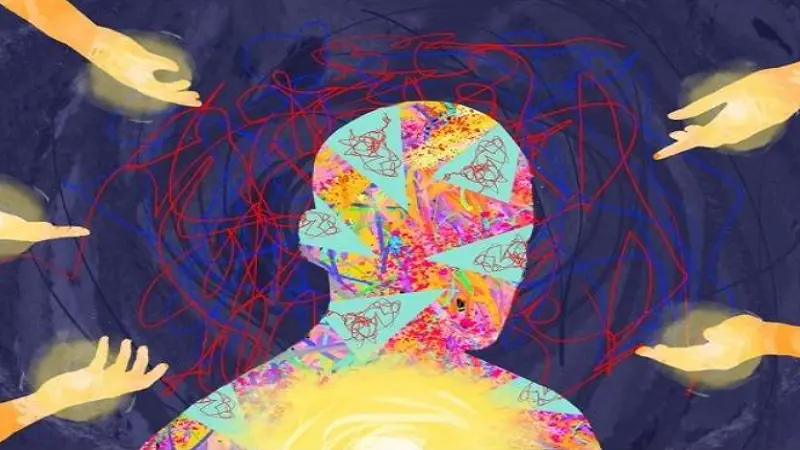The psychedelic contains mescaline, which is a naturally occurring chemical occurring in several species of cacti, most famously, Peyote (Lophophora williamsii), San Pedro (Echinopsis pachanoi), and Peruvian Torch (Echinopsis peruviana). Being an indigenous spiritual drug thousands of years old, mescaline has gained interest among modern people not only because of its high power to induce hallucinations but also because of its potential to provide psychedelic medicine.
Along with this paper, we will discuss the physical and psychological effects of mescaline, and how it functions in the brain, as well as its traditional and modern uses, and how it is playing out in a therapeutic context.
What Is Mescaline?
Mescaline falls in the psychedelic alkaloid family, in which the drug has action on serotonin receptors of the brain, specifically, the 5-HT2A receptor. It belongs to the phenethylamine family of substances, to which both MDMA and amphetamines belong, but the effects of mescaline are more comparable to those of LSD and psilocybin in terms of forming hallucinations.
As a substance of Native American ceremonies, usually in the past and naturally obtained, mescaline is capable of giving strong visual and emotional experiences that can last between 8 and 12 hours.
Mescaline Psychological Impact and Somatic Impact
The effects of mescaline are extremely variable in terms of dose, the mindset of the user (set), the environment (setting) as well as individual sensitivity. Several shared effects are, however, always reported.
Psychological Impact of Mescaline
Enhancement of Vision and Senses
Among the most specific mescaline effects are the visual distortions. Users often report seeing:
- Bright colors and geometrical forms.
- Increased vision of movement and light.
- Objects that seem to come alive, breathe, or shape.
- A feeling of a unity of colors, sounds, and emotions (synesthesia).
These are beautiful as well as overwhelming visual effects, particularly to first-time users.
Altered Thought Processes
- The profound self-reflection and philosophical suggestions.
- Time distortion (minutes can relatively be hours)
- Catharsis and emotional discharge.
- Improved innovativeness and clarity.
Most users report mescaline as inducing a higher state of consciousness, which is commonly accompanied by spiritual or existential insights.
Ego Dissolution
In higher dosages, mescaline can give the so-called ego death, or the temporary loss of identity. It may be a very liberating or frightening experience, depending on the readiness of the user. Returning to therapeutic practice, ego disintegration may result in emotional breakthroughs.
Mescaline Physiological Effects
Mescaline also has diverse physical effects, however, mainly psychological ones:
- Dilated pupils
- Fast breathing and high blood pressure.
- Nausea, vomiting (this is most frequent with Peyote)
- Sweating or chills
- Muscle tension
- Fine tremors, pain in the body.
The mescaline effect may start in 45 minutes to 2 hours following the administration, reaching its peak in 2 to 4 hours, and then a slow recovery.
The Mechanism of Mescaline Action in the Brain
Mescaline also binds mostly to serotonin receptors, and one of them is the 5-HT2A receptor, which is greatly involved in mood, perception, and cognition. Mescaline disfigures the normal connections in the brain by engaging in the activation of these receptors and giving rise to novel patterns of connection, especially between those regions that do not normally connect.
It is this distraction that causes disturbed perception, audio and visual hallucinations, and consciousness alterations. Other studies in neuroscience indicate that psychedelics such as mescaline temporarily suppress the function of the default mode network (DMN) of the brain that is linked to self-referential processing and the ego.
Mescaline can enable its users to view the world in a radically different way by turning the DMN down.
Historical Mescaline Medicine among Indigenous Peoples
To the cultures of the Native American and indigenous South Americans, mescaline cacti have long been utilized in religious ceremonies and to cure the sick. These are not rituals that are recreational; they are highly spiritual experiences that serve to bring about personal transformation, a unifying bond more to do with the community, as well as to communicate with the divine.
In a case in point, the Indian Church relies on Peyote treatment as part of a ceremonial setting to cure alcoholism and depression, and emotional traumatic experiences. Such ceremonies are usually followed by feelings of forgiveness, connection, and a sense of purpose in the participants.
This ancient application serves as the basis of contemporary investigations of psychedelic medicine, with the aim being the same: the promotion of healing with altered states of consciousness.
Mescaline and Psychedelic Medicine
During the past few years, mescaline has been a subject of interest among researchers, therapists, and policymakers as part of a continued revitalized interest in psychedelic medicine.
Therapy Potential of Mescaline
The initial studies and anecdotal reports have indicated that mescaline could be useful in the treatment of such conditions:
- Depression, anxiety: It will assist in obtaining new knowledge and emotional discharge.
- Post-traumatic stress disorder (PTSD): In case of a buried or profoundly repressed trauma.
- Addiction: Alcohol and nicotine, as is the scenario with certain rituals of Native Americans.
- End-of-life anxiety: Assistance to the terminally ill patients to accept death.
Compared to other drugs, including MDMA or psilocybin, the clinical research of mescaline in this specific instance is considerably minimal. However, the small amount of research work and the emergence of anecdotal evidence indicate that it also may share the benefits in its case when it is done cautiously and in the proper setting.
Difficulties and Legal Approaches
Even in the religious context of the Native American Church, mescaline is a Schedule I drug at the federal level in the U.S. (that is, it is believed to be highly abusive and without medical application). This classification is, however, being increasingly disputed due to science discovering the advantages of psychedelics in general.
Mescaline cacti are being culturally and religiously safeguarded in certain parts, particularly in South America and Mexico. The mescaline-containing plants have been decriminalized, making them legal to possess and use in cities such as Oakland and Santa Cruz, U.S.
Safety, Hazards, and Best Practice
On the one hand, mescaline is usually regarded as physically safe and not addictive, but on the other hand, it is not entirely a risk. It may cause psychological distress, panic attacks, and bad trips, particularly among the unprepared or unstable individuals. The major harm-reduction measures are:
- Social adaptation strategies plan: environment: Work in a safe and comfortable space; attitude: positive.
- Trip sitter: Must have worked sober, trusted man about.
- Less is more: First-time users.
- Integration: It is essential to think and work through the post-trip experience.
Individuals who have a history of psychosis or schizophrenia at the individual or family level should not use mescaline because it may precipitate latent symptoms.
Conclusion
The mescaline actions on the human body and mind are deep, complicated, and very personal. Being a strong psychedelic, it not only provides a rich visual experience and the perception of something out of the ordinary, but also presents an excellent chance to be deeply introspective, healing, and connected with the spiritual world.
As the field of psychedelic medicine gains more and more attention, there is a slow reentering trend of mescaline into the discussion as a possible method to treat mental health issues and improve emotional states. Although the current knowledge of mescaline is in the initial phase of research, it is believed that with due caution, mescaline can be a transformative agent due to the long history of traditional usage and contemporary anecdotal evidence.
Like any other psychedelic, the essential elements of using mescaline are respect and education, as well as intention, without which the potential of this drug, rather than drug, will remain unexplored. See more

